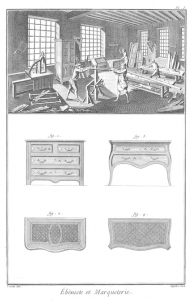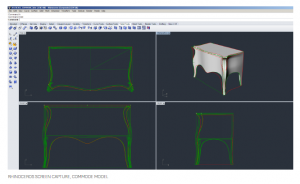As a graduate student digital fellow for A Virtual Enlightenment, I will be assisting students who are working on the Uses of Space project. The seminar’s approach to the Tessé room in the Metropolitan Museum as a space where bodies moved–both laboring bodies and bodies that resided in the Hôtel–is aligned with recent scholarship in architectural history as well as my own work as a doctoral student in Architecture at Columbia. The geographical focus of my research is oriented more towards the Indian Ocean world than towards Europe, though I am fascinated by the movement of workers and commodities across oceans during the eighteenth and nineteenth centuries, which connects to the material histories that are the focus of the seminar.
Since we are combining a digital lab with a seminar on the history of the Enlightenment, over the last few weeks I have thought about an idea from Henri Lefebvre about layering of networks. In his excellent book Signal and Noise: Media, Infrastructure, and Urban Culture in Nigeria, the Barnard anthropologist Brian Larkin wrote:
“Newly developed networks do not eradicate earlier ones but are superimposed on top of them, creating a historical layering over time. This is why Henri Lefebvre argues that when we look at the city we are confronted not by one social space but by many, all clashing and feeding off of each other at the same time.” (6)
In a way, our own course is a version of this city, with its historical layers and multiple spaces. A recent digital lab session by guest lecturer Miku Dixit made visible one instance of this layering by using Rhino, a modeling software, to digitally reconstruct an eighteenth century commode using a plate from Diderot’s Encyclopédie. By showing us how to trace each component of the commode as drawn in the Encyclopédie, the lecture on Rhino helped us see that the Encyclopédie was an earlier layer for the three dimensional technologies of today. Of course, the pages of the Encyclopédie were static, unlike the Rhino screen where one can pan through perspectival or orthographic projections. But even with this difference, in the digital lab for A Virtual Enlightenment both technologies connected two dimensional spaces to the labor of guilds and the domestic interiors preserved in the Tessé period room, becoming part of a single historical layer made up of surprisingly related processes.

